There’s no doubt that tea bags have become common among several tea lovers as compared to loose tea. Of course, tea bags are much easier and more convenient to use as compared to loose tea. As such, questions have arisen about the ingredients used to make tea bags. So, what are tea bags made of?
Tea Bag Ingredients
Nylon, plastic, and bleached paper are the three main ingredients used to make tea bags. Other materials used include glue/sealing compound, soilon, cotton, hemp, muslin, and silk.
While these ingredients are widely used, they are not 100% safe. To clear up your doubts, here is what you need to know about tea bag ingredients:
· Paper for Tea Bag
To begin with, it’s important to understand that paper tea bags being biodegradable does not guarantee your safety. More often than not, these paper tea bags are made from bleached paper. Manufacturers mostly bleach paper using chlorine dioxide to achieve the white color for aesthetic purposes.
And it’s easy to see why. The appearance of a product boosts sales. What’s more, manufacturers use epichlorohydrin to boost the strength of the tea bags. Worse yet, this substance has proven to contain carcinogenic compounds that could be very dangerous after prolonged use.
Unfortunately, the consumer is on the receiving end of being exposed to health risks after consistent use of the product. Some are extremely hazardous.
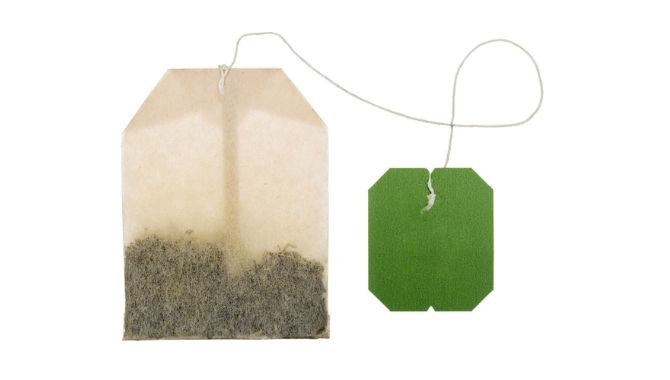
Advantages of Paper
- Paper is cheaper.
- Owing to its semi-permeability, there is enough flow of water when making tea.
- The paper does not change the taste of tea.
Disadvantages of Paper
- Paper is not durable.
- Small leaf particles can penetrate through and escape.
Plastic for Tea Bag
Secondly, not all tea bags are made from paper. Some are made from plastic, which, to say the least, poses risks to humans. Here’s a closer look:
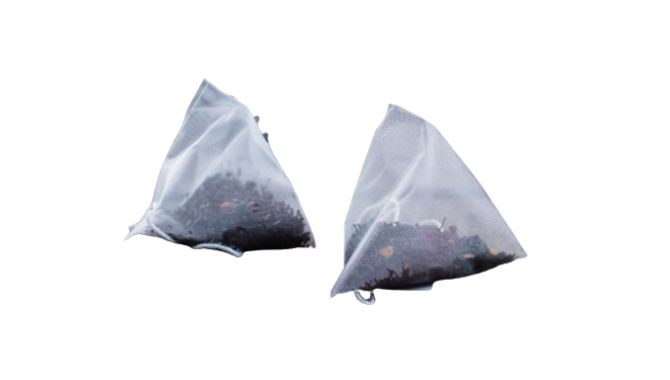
Polyethylene is the main plastic ingredient used in the production of tea bags. As compared to paper tea bags, plastic tea bags are bigger. Once you dip your tea bag in a cup of hot water, there is a very high likelihood of chemicals from the plastic being released into your beverage. This, coupled with chemicals from bleached paper, poses a health risk not only to humans but also to the environment in general.
Billions of microplastics and nanoplastics are released into every cup of tea you take, and this slowly becomes a huge health risk.
Advantages of Plastic
- Plastic is durable as compared to other materials like paper.
Disadvantages of Plastic
- Plastic can leach several microplastics and nanoparticles into your hot water, risking your health.
- It is non-biodegradable.
Sealant to use in Tea Bag
Apart from synthetic fibers, and staples, polypropylene is the main ingredient used to seal the opening of the tea bag. This is due to its heat and water-resistant properties. However, this doesn’t mean that they are 100% safe. Keep in mind that most, if not all, of the sealants used contain chemicals.
For that reason, dipping your tea bag in hot water might cause the leaching of these chemical compounds into your tea. This, in turn, raises the health risks associated with consuming contaminated tea.
Nylon for Tea Bag
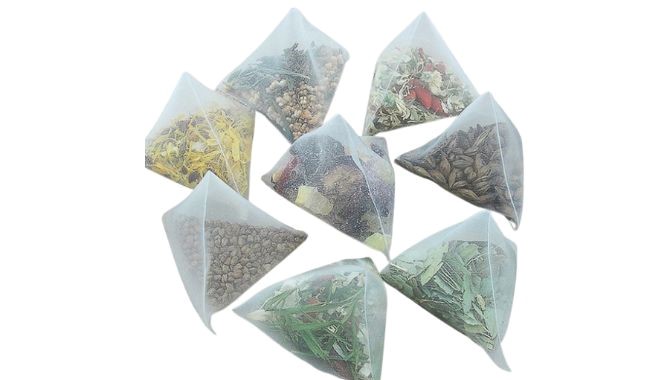
Nylon is known to retain its composition even after exposure to high temperatures. As such, dipping it in hot water when making tea has fewer negative impacts as compared to plastic. Not to mention that it is environmentally friendly. These features make it an ideal choice for the production of tea bags.
So, how do you identify a tea bag that is made from nylon?
In most cases, nylon tea bags take the shape of a pyramid or envelope. The reason behind these shapes is to allow the tea bag to fully expand once it’s dipped in hot water. This way, the released flavors are much more enriched.
Advantages of Nylon
- Nylon has good strength.
- Heat can be used to seal the opening of nylon tea bags.
- Nylon lacks an aftertaste
Disadvantages of Nylon
- First on the list is its non-biodegradable feature, which makes it environmentally unfriendly.
- There is a probability of nylon releasing chemicals when dipped in hot water.
Cotton for Making Tea Bag
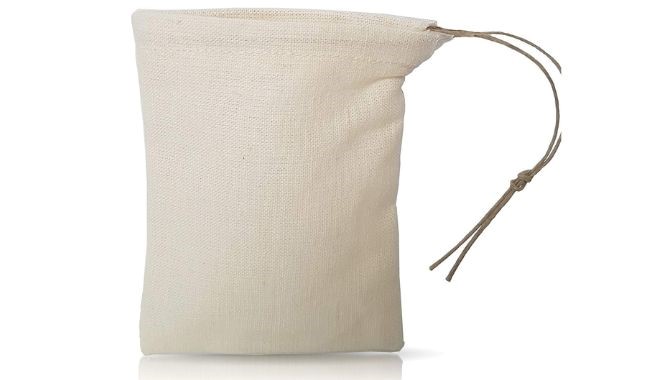
Even though most tea bags don’t use cotton, it still remains a common ingredient in some special tea bags. Cotton is a natural ingredient, therefore using a cotton tea bag has a less toxic effect.
Advantages of Cotton
- Cotton retains the original flavors of your tea.
- Cotton is eco-friendly.
Disadvantages of Cotton
- Cannot be sealed using heat.
- It is expensive compared to other alternatives.
Muslin for Tea Bag
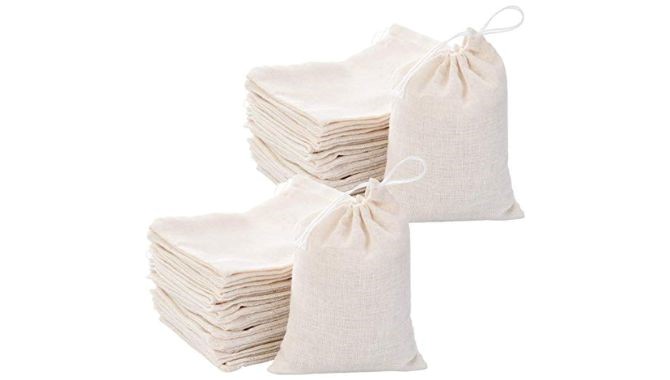
Muslin is a type of cotton, so the features do not widely differ. Muslin is more breathable, more lightweight, and cheaper compared to cotton. However, muslin also has its disadvantages, which include:
- Production of muslin tea bags is labor intensive owing to the sealing mechanism used.
- The holes on muslin tea bags allow small tea particles to penetrate the tea bag.
Soilon for Tea Bag
Most pyramid-shaped tea bags are made from soilon. Soilon is a biodegradable material that is made from corn starch. In addition to that, it can be sealed using heat and has good permeability, resulting in excellent liquid diffusion.
soilon is however more costly and requires special storage that limits the absorption of moisture, as this could tamper with its durability.
Hemp for Tea Bag
Hemp is increasingly becoming a common material in the tea production industry. As mentioned before, bleach is the main compound used to improve the aesthetics of a tea bag. However, hemp facilitates the production of organic tea bags that lack toxic chemicals.
Advantages of Hemp
- Not only does it have better strength, but it’s also durable.
- Hemp is eco-friendly and doesn’t need pesticides.
Silk for making Tea Bags
Silk is widely known for having a luxury aesthetic owing to its smooth texture. Ideally, silk is derived from PET, which is a type of plastic or nylon. Both of these materials have similar features to silk. In most cases, silk is used to make pyramid-shaped tea bags.
Not only is silk strong, but it also allows easier diffusion of tea. In addition to that, it is flexible and can thus be used to produce different shapes of tea bags.
Selecting a Safe Tea Bag Material
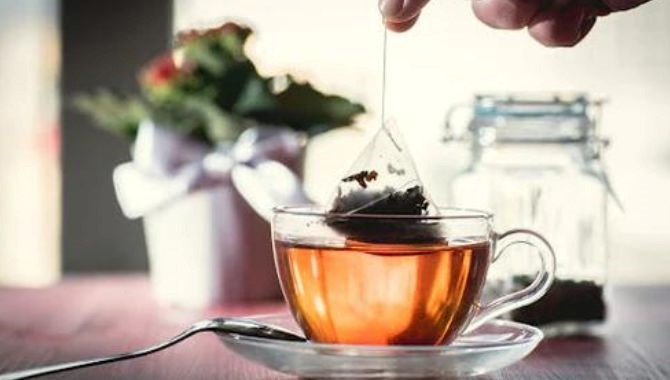
Generally, it’s important to have a closer look at the ingredients of the tea bag you are purchasing.
While doing so, avoid tea bags that include plastics such as polypropylene, among others. Instead, select natural materials like natural fibers, silk, and cotton, just to mention a few. This prevents you from consuming chemicals and nanoparticles released from plastic materials used in tea bags.
Using loose tea and tea drops instead of tea bags is a safe way to consume your tea without worrying about any possible intoxication.Conclusion
Even though most tea consumers are not conscious of the effects of consuming some tea bags, this guide has enlightened you on that. Tea bags are made of different materials, some of which can be toxic to humans. Therefore, it’s important to always do your due diligence when selecting your tea bag to avoid purchasing hazardous products.
More Resources:
Ways to make Tea Bag – Source: JOCHAMP
Are Tea Bags Harmful – Source: JOCHAMP
History of Tea Bag – Source: JOCHAMP
Tea Bag – Source: JOCHAMP


